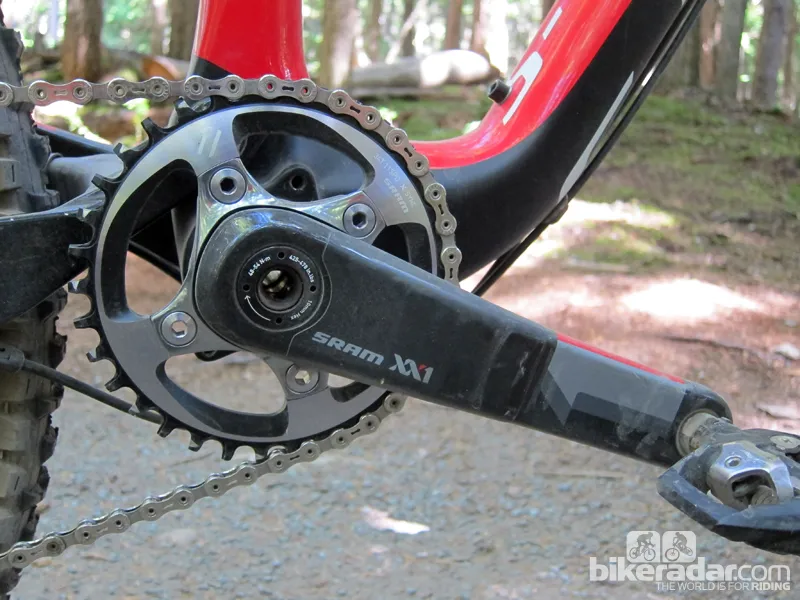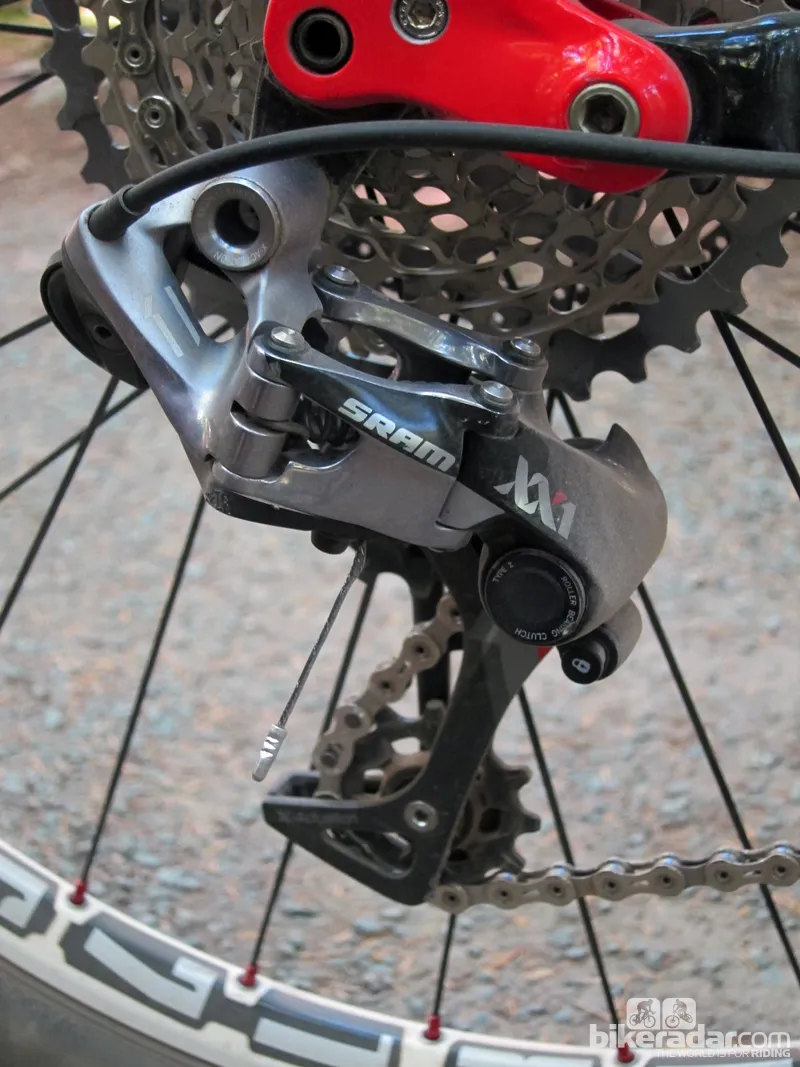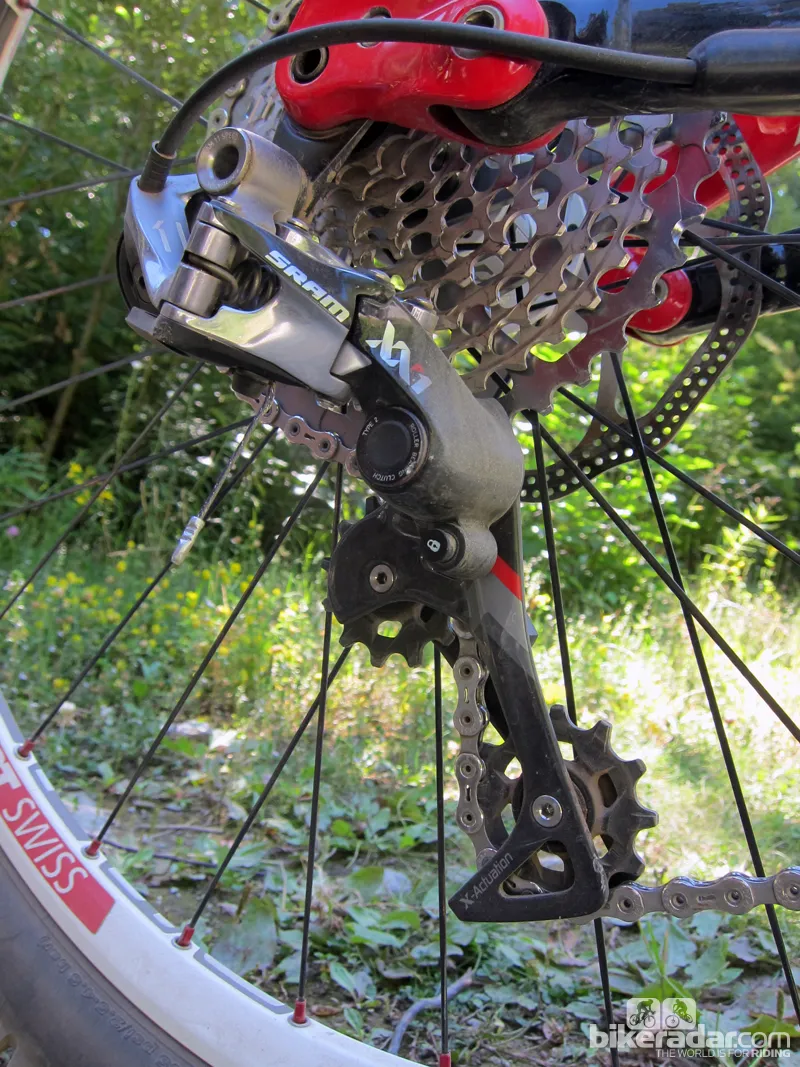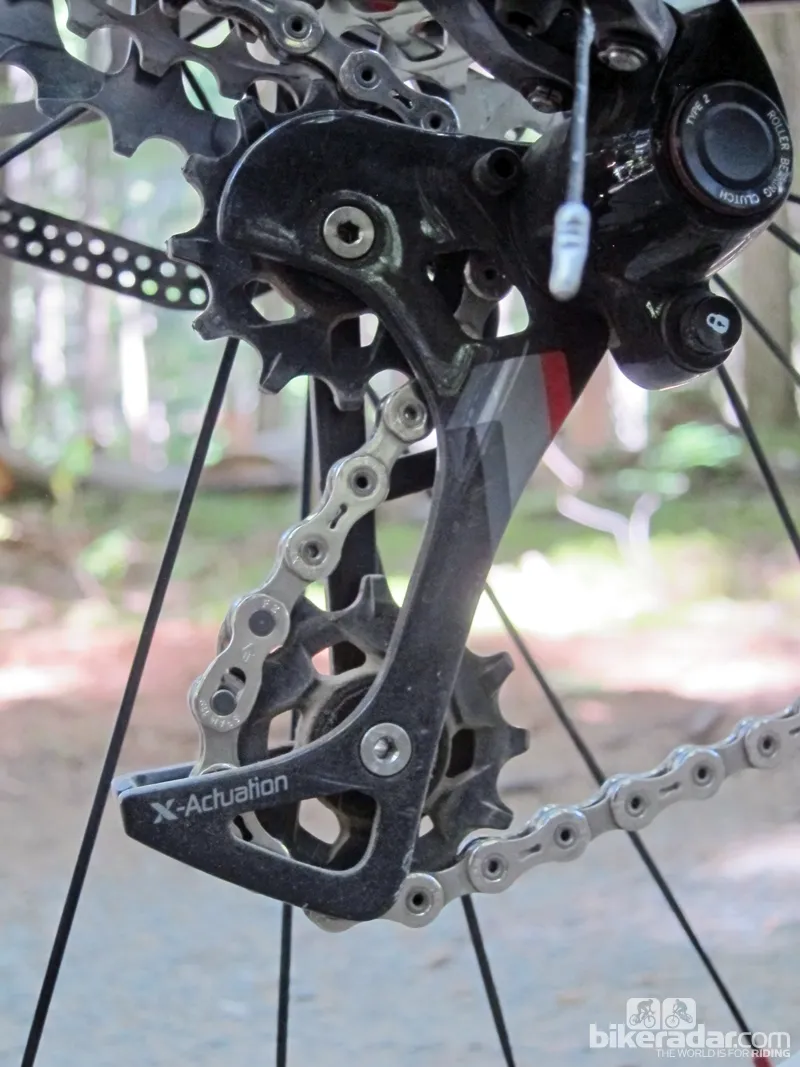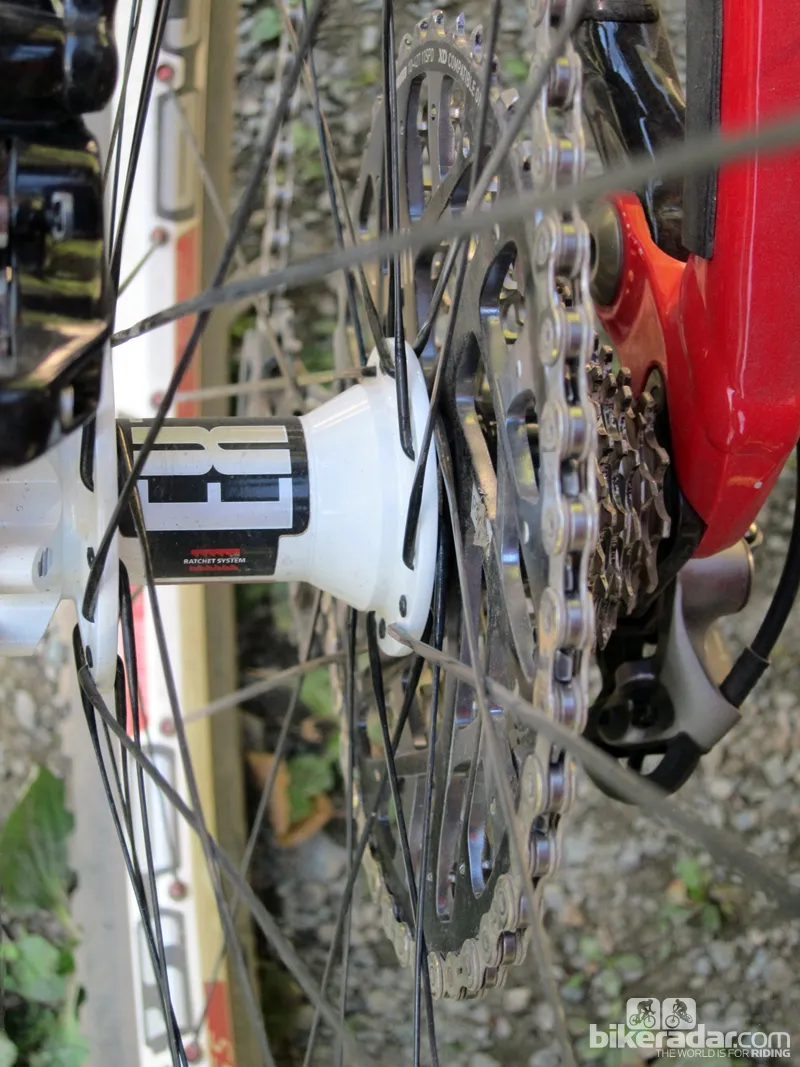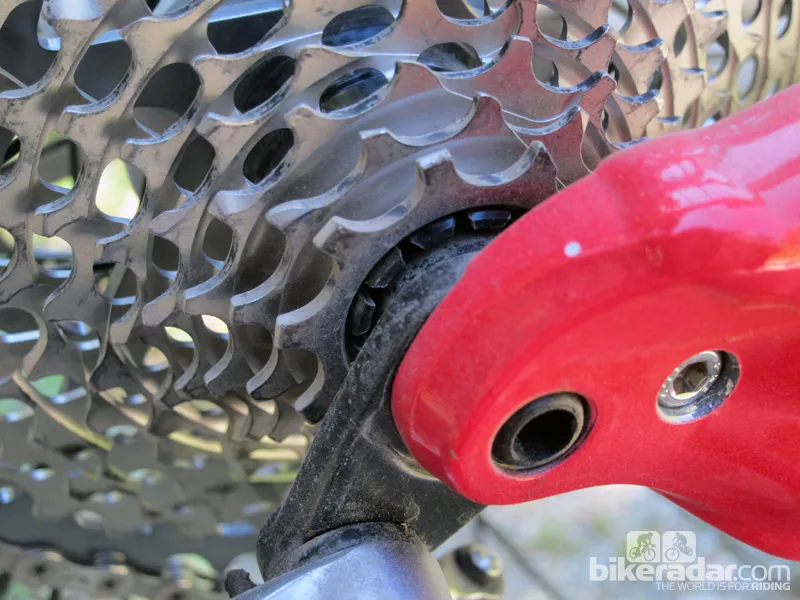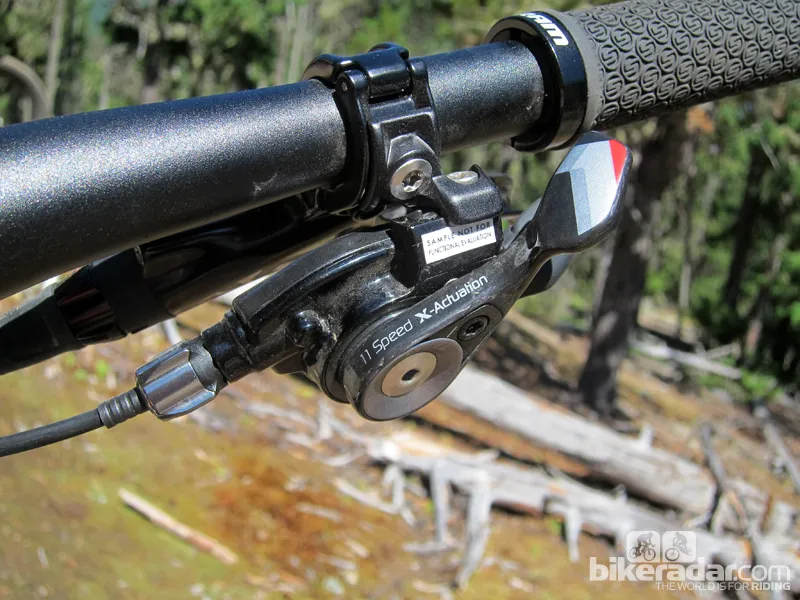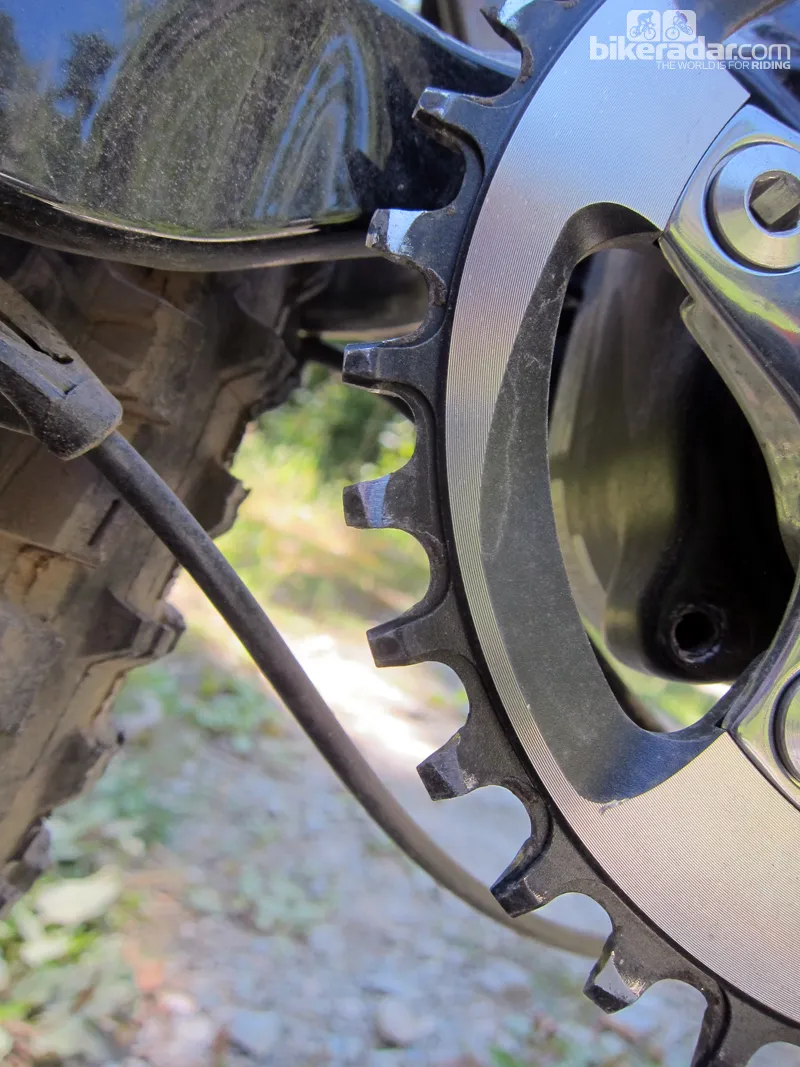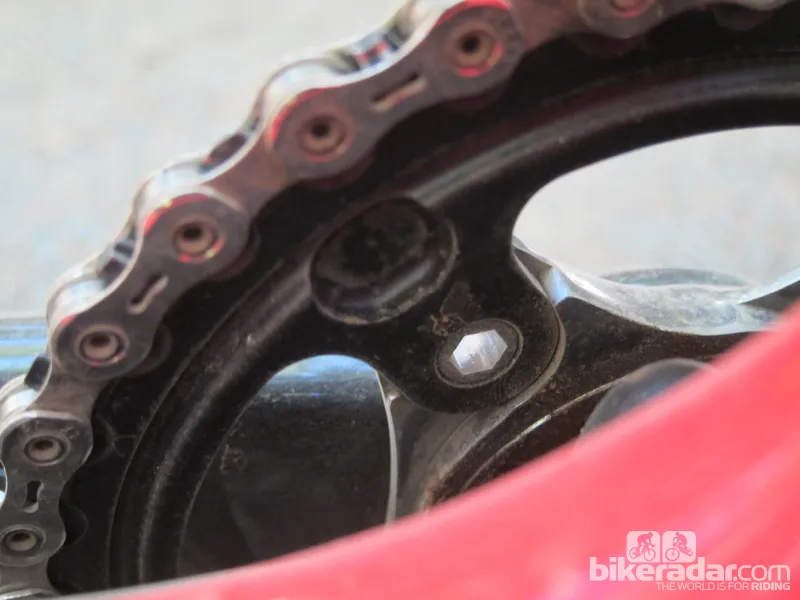BikeRadar was able to give you an exclusive early look at SRAM's innovative new XX1 1x11 mountain bike drivetrain back in May. But it wasn't until this week's Crankworx in Whister, Canada, that we were able to give it a proper go on the trail.
They say patience is a virtue, though, and our first impression is that the groupset was worth the wait, and that reasonably fit trail riders should find the range more than adequate. It's light, it looks good, it's quiet, it's secure and, most importantly, it just flat-out works.
One chainring but plenty of range
Our Specialized S-Works Enduro loan bike was equipped with a 34T chainring as we headed out for a spin around Whistler's Lost Lake trail network. While there were no huge climbs or bomber downhills, there were still plenty of shorter – but reasonably steep and technical – ascents and fast, attention-demanding descents, including part of the Crankworx Enduro course.
Shifts are quick and precise, with XX-like chain movement across the cassette even under load. We were never at a loss for gears despite having just one chainring. In fact, we probably could have gone with the 36T option and been comfortable. Moreover, none of the individual jumps on XX1's massive 10-42T cassette are disruptingly big, and they're admirably even across the spread.
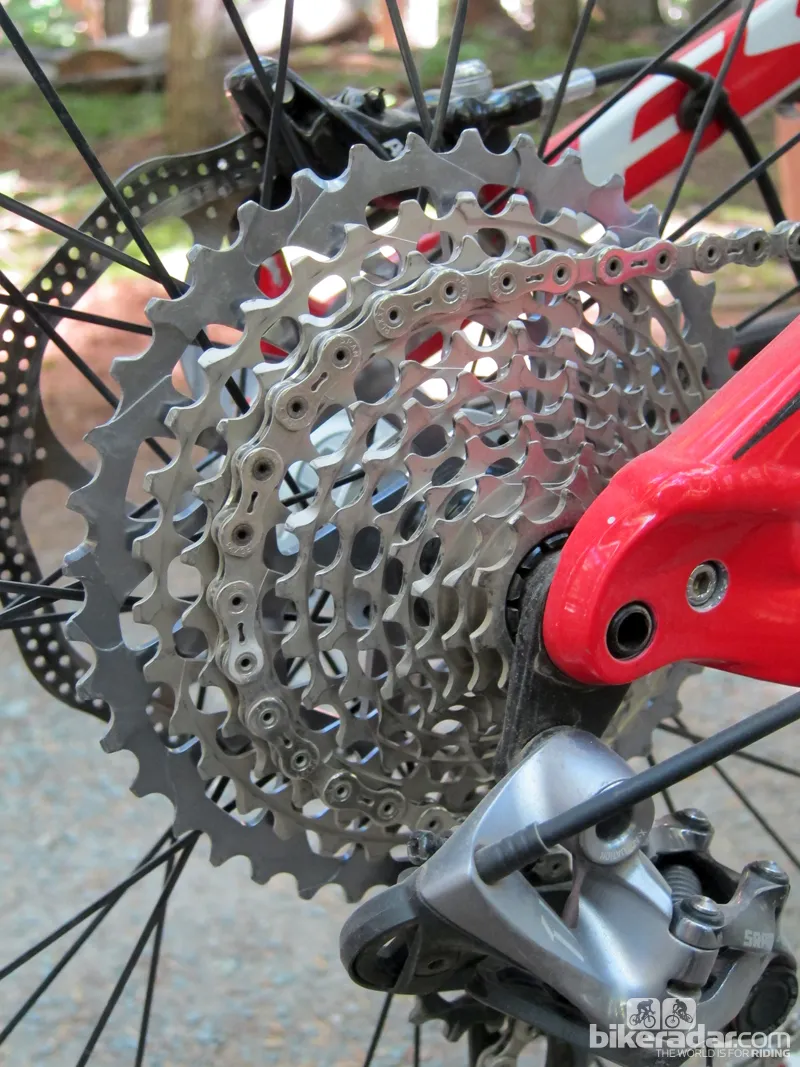
The new cassette features a massive 10-42T range
XX1's total range can't match SRAM's current 2x10 offerings. But, then again, that's not the goal (more on that later). Chainrings will be available from 28 to 38 teeth in two-tooth increments, and the idea is that the user will choose the gear range 'window' that best suits the task at hand. For example, we can easily foresee gearing down to a 32T chainring for the big mountain climbs of our US office in Boulder, Colorado. Meanwhile, folks with a more rolling landscape could probably get along fine with the 36T or even the 38T variant.
To ease gear swaps, the XX1-specific bolt circle diameter is designed so that chainrings can easily fit around the crankarm and spider (meaning you won't have to pull the driveside arm). There are integrated threads on the chainrings (meaning fewer parts to lose) and the bolt pattern is asymmetric so it's impossible to install the ring incorrectly.
Clever tooth profiling
More than a few editors on site were concerned about the lack of a chain guide on our test bikes, especially considering the 11-speed cassette's broader range of chain angles compared to a standard 10-speed setup.
Nevertheless, none of us had any chain retention issues, and it's hard to derail the chain up front manually given the tall, slightly hooked and alternatingly indexed 'X-Sync' chainring tooth profiles that hold onto the new PC-XX1 chain with impressive tenacity.
In fact, a separate test crew from another publication rode their similarly guide-free XX1-equipped bikes down Whistler's far more demanding Top of the World trail and had no issues – to the point where one editor insisted that SRAM had embedded high-power magnets into the CNC-machined aluminum chainring (alas, there are none).
That being said, SRAM still admits that a guide might be necessary in more extreme conditions. For example, while sponsored rider Jerome Clementz showed up to join our ride sans guide, he used one to win the Crankworx Enduro a few days earlier.
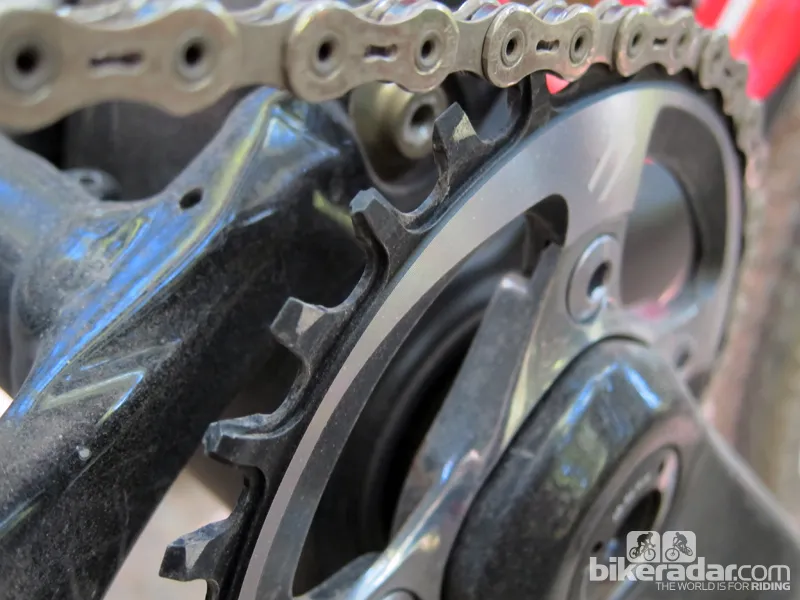
The synchronized teeth mesh perfectly with the new PC-XX1 chain
SRAM has also integrated a similar, but less extreme, tooth design into the rear derailleur pulleys. While chain retention generally isn't an issue back there, we noticed how quietly the system runs – even in the 10T and 42T gears. Because XX1 is optimized for a single ring, the chainline is perfectly positioned in the crank.
Moreover, the inclusion of SRAM's Type 2 one-way clutch for the pulley cage virtually eliminates chain slap. Plus, a new finishing process on the PC-XX1 chain supposedly improves elongation wear by four times compared with the company's current 10-speed chains, despite narrower rollers.
Trigger or twister options
SRAM will offer XX1 with both trigger and Grip Shift shifter options. We sampled the former, and while its mechanics are supposedly more closely related to X0, the look and feel are more akin to the standard XX unit. Clicks are easily audible, with good tactile feedback overall, albeit with a little tinniness compared with Shimano's more substantial feel.
As usual, each downshift push moves the chain across a maximum of three cogs, while the release trigger does one at a time in rapid-fire succession.
Obviously, XX1's 1x11 configuration includes no front shifter. Weight and simplicity benefits aside, riders who run dropper posts will now be able to run remote levers in a more ergonomic position, beneath the bar. And when things get hectic there's also one less set of controls to juggle.
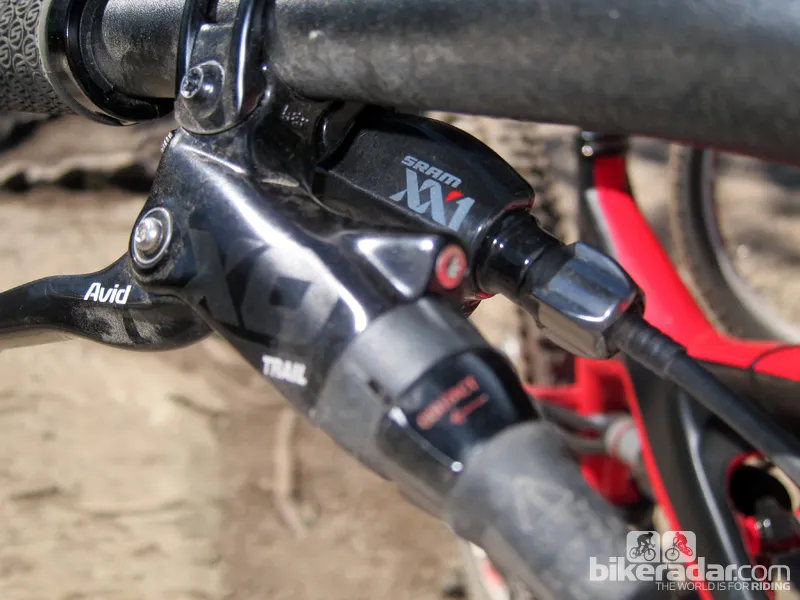
The XX1 trigger shifter is compatible with MatchMaker X mounts, for a neat look
A note on compatibility
As previously mentioned, the new XX1 cassette will only mount to the new 'XD' cassette body, which is currently offered only by SRAM, Mavic and DT Swiss. It's worth keeping in mind that a number of companies use DT Swiss freehub bodies in their own wheel designs, though, greatly expanding the collection of compatible offerings.
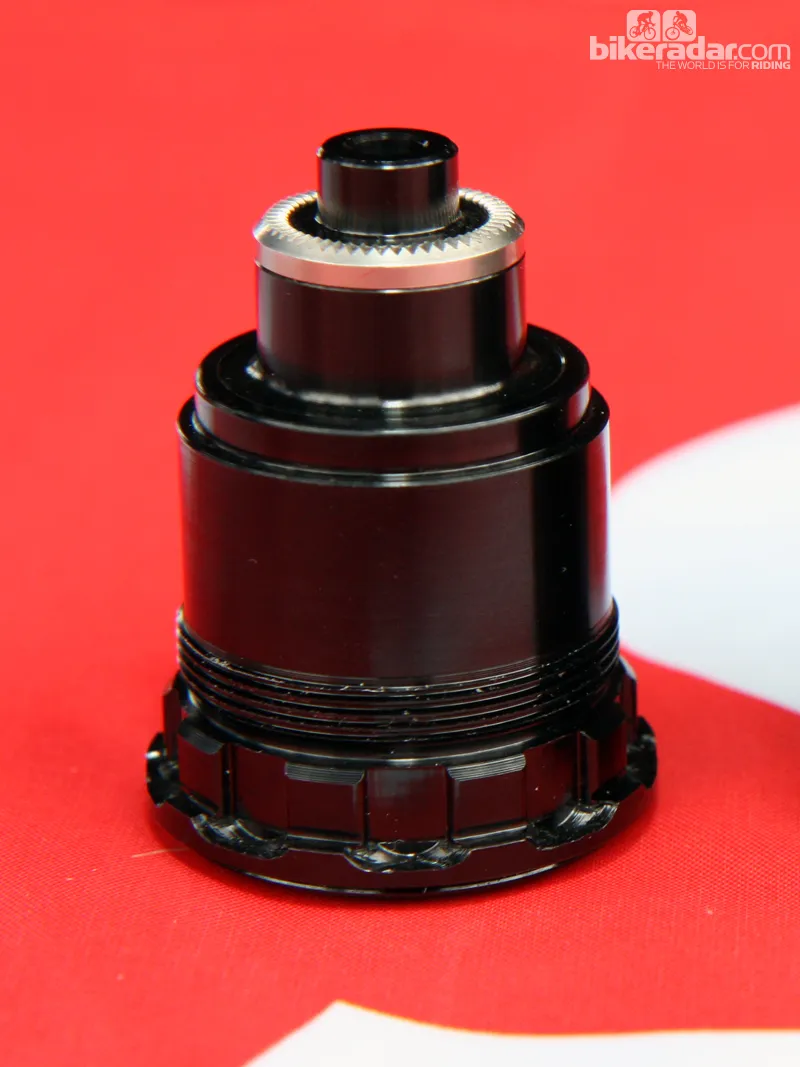
The new XD freehub body isn't all that different from a standard SRAM/Shimano driver
According to SRAM's drivetrain product manager Chris Hilton, a "very, very long list" of other companies have already signed on as well. This means consumers shouldn't have much of an issue finding retrofittable bodies to mount on existing wheels, especially as the design doesn't require changes to the axle interface, unlike Shimano's new 11-speed Dura-Ace group.
Interested parties can check out SRAM's dedicated site for more information on XD, including detailed drawings and licensing info.
What's the point?
Hilton readily admits that XX1 isn't for everyone, but for those who are already using 1x drivetrains – or have considered it – the new group certainly expands the versatility range and decreases some of the technical barriers to entry. Performance riders will enjoy a more straightforward drivetrain, with none of the mechanical headaches commonly associated with multiple chainrings, more chainring clearance (plus, the teeth are never exposed to rocks and logs) and less parts to fail.
From a manufacturer's perspective, there are also the side benefits of not having to worry about front derailleur placement (meaning chain stays can be shorter and more widely spaced, for better handling and tire clearance) or the effects of multiple chainrings on suspension performance. In addition, the 1x11 concept is just simpler to operate.
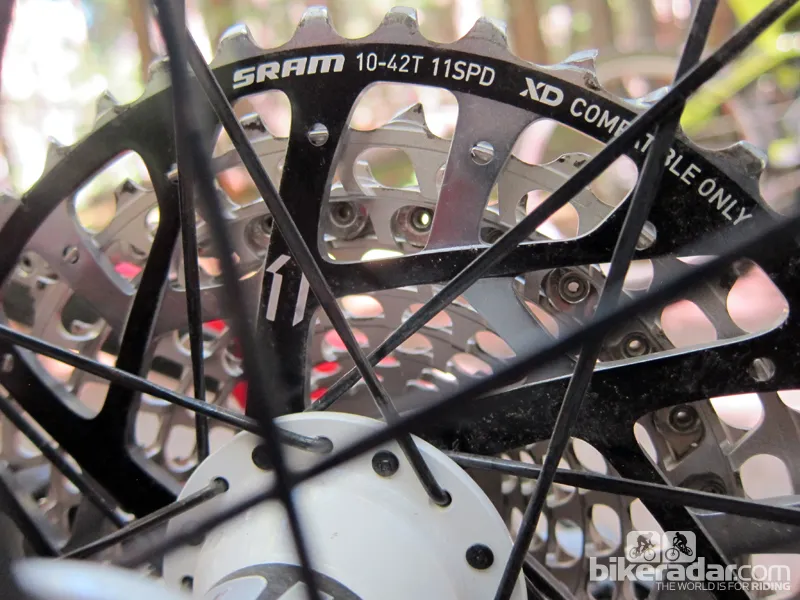
The largest cog is a pressed-on aluminum piece
We're currently waiting for confirmation on XX1 costs. Granted, the premium pricing (roughly between XX and X0 in terms of total group cost) will put it out of reach of the masses, but it's inevitable that SRAM will expand the idea to lower price points.
SRAM doesn’t expect 1x11 drivetrains to completely supplant 2x10 ones – and neither do we. Nevertheless, we don't see any downsides at the moment, aside from the slightly narrowed total gear range.
Needless to say, one ride of SRAM XX1 wasn't enough, and we're aching for more saddle time.
Production XX1 bits should begin shipping in October.
